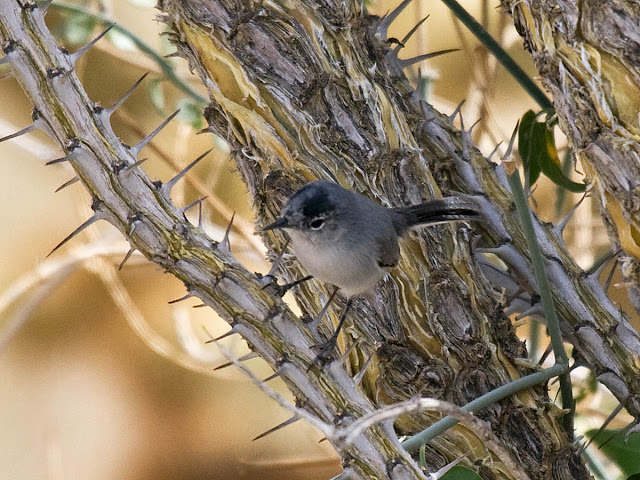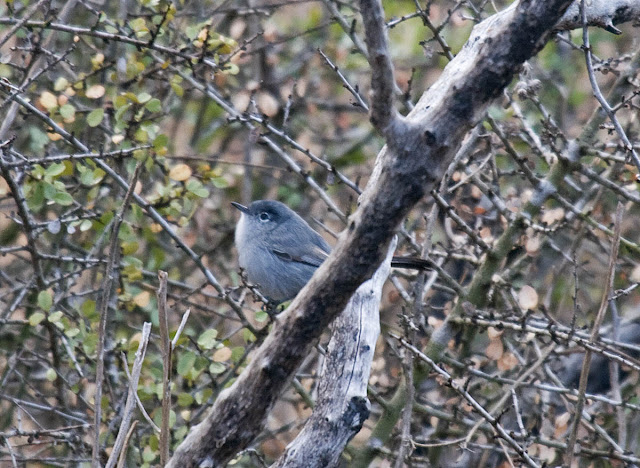 |
| Buck Gillson. Quartzsite, Arizona. About 1982. Photo by Marlene Gillson. |
No one knew my grandfather as Russel. He was called Buck from childhood. It was a fitting name, as he was quite a character. I can't believe he's been gone 22 years.
As snow birds, my earliest memories (1963) were of my grandparents visiting in the spring after returning to Minnesota from a winter camped out in the desert in Big Bend, Texas or other exotic places with accompanying dark tans, interesting souvenirs, and fascinating adventure stories. Later, after Marlene and I were married, we visited them a few times to camp with them for a few days on the desert at Crystal Hill, Arizona, where Marlene took the above photo: "Come on, girl, are you gonna take all day to get this photo?"
Grandma's name was Leora, but she was called Babe since childhood. Everyone knew them as Buck and Babe ("like a team of mules," my grandfather would say). They were both 17 when they married.
 |
| Helen, Walter, and Russel Gillson about 1916. Mankato, Minnesota. |
This picture is new to me, I mean, I hadn't seen it before about 5 years ago when my sister Sheri emailed it to me. Comment from my sister: "Grandpa as a little scrapper in knee britches, bare-feet, and about as ornery
as I've ever seen a little boy look."
This photo looks like it could have inspired "
Lil' Rascals" (1922-1937).
Formally educated until the 8th grade, I always remember stacks of 15-20 library books at a time in my grandfather's home on every topic from astronomy and psychology, to steam locomotives.
The obituary below must have appeared in a Mankato, Minnesota newspaper. I don't know where I picked it up.
Russel M[arvin] Gillson [1911-1991]
Salem, Ore.-- Longtime Mankato[, Minnesota] resident Russel M. "Buck" Gillson, 80, died Tuesday, December 31, 1991, at Salem, Ore., where he had lived since 1987.
Memorial services were Jan. 4 at the Oak Park Kingdom Hall of Jehovah's Witnesses in Salem, Ore.
Mr. Gillson was born in Mankato, Jan. 22, 1911, to Thomas and Lorena (Kraft) Gillson. He married Leora Blanshan in Mankato, Jan 19, 1929. He was employed as a fireman on steam locomotives for the Chicago and North Western Rail Road; as a foreman in the Mankato Parks Department; worked at Continental Can Co.; was a tool and die man at Kato Engineering for many years; and after working for a time as a carpenter, became a stationary steam engineer at St. Joseph's Hospital. In 1967 he moved to Albany, Ore., working there as a stationary engineer until he retired. He moved to Salem about 4 years ago. He was a member of Jehovah's Witnesses and enjoyed music and collecting fossils.
Mr. Gillson is survived by his wife; a son, Ronald of Yreka, Calif.; a daughter, Phyllis Sisson of Salem, Ore.; a sister, Helen Cornwell of Hemet, Calif.; 6 grandchildren; and 12 great-grandchildren.
See my previous post on the
Gillson family.
Leora Gertrude Blanshan Gillson [1911-2008]
Born June 25, 1911 in Fairbanks, Minnesota. Died December 15, 2008 in Salem, Oregon at 97 years of age.
More on my grandmother's family is on this web page I recently discovered:
Chester Ralph Blanshan.
My grandparents talked fondly of "Grandma Buck." I didn't really know
who she was until I found her on the web recently--she was Babe's
mother's mother,
Alzora Celestine Richardson Buck.
 |
| Buck and Babe. 1988. |
During family get togethers, Grampa Buck and my father would regularly play cribbage. Soon after there was a victor they'd get their guitars and harmonicas out. Beer Barrel Polka, The Wreck of the Old 97, and just to irritate Babe, Buck would sing Grandma's in the Cellar, My Father Has Tuberculosis, and my (and my children's) favorite... a folk song that seems to have been sung by many grandparents with many
differently rendered verses and tunes.
Burglar Bold (The Old Maid Song)
Let me tell you a story of a burglar bold, who went to rob a house;
He opened the window and then crept in, as quiet as a mouse;
He looked all around for a place to hide, in the room where the old maid slept;
He thought of the money and jewels she had, as under the bed he crept
The old maid came home 'bout nine-o'clock; "Oh, I'm so tired," she said;
And thinking all was well that night, she never looked under the bed;
She took out her teeth, and her big glass eye, took the hair all off of her head;
Well, the burglar had about seventeen fits as he peeked from under the bed
From under the bed the burglar crept, he was a total wreck;
The old maid she was wide awake, she grabbed him around the neck;
She did not faint nor run away, but said as calmly as a lamb;
"At last my prayers are answered now,... at last I've got a man!"
She pointed a pistol at his head, and very calmly said;
"Now if you do not marry me, I'll blow off the top of your head";
The burglar saw that he was caught, and he had no place to scoot;
He thought of the teeth and the big glass eye,.. and said "For the gosh sakes, shoot!"



















